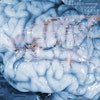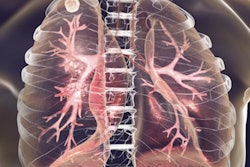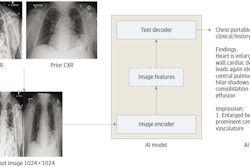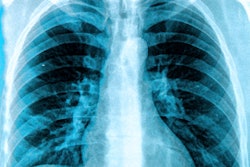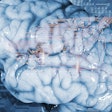Machine learning has revealed new potential for a simple clinical tool proposed in 2010 for diagnosing tuberculosis (TB) on x-rays, according to a team at the National Institutes of Health (NIH).
The tool, called the Timika score, could help doctors worldwide who lack resources to identify high-risk TB patients, wrote researchers led by Gabriel Rosenfeld, PhD, of the National Institutes of Allergy and Infectious Diseases.
"This is especially important in the growing number of [drug-resistant] cases endemic in certain parts of the world where early diagnosis, risk management, and treatment are key to containing the spread," the group wrote, in an article published September 27 in the European Journal of Radiology Open.
The Timika score was developed in 2010 by investigators at the Menzies School of Health Research in Darwin, Australia. The score (a scale of 1 to 140) was designed for physicians in underserved clinical settings and is based on the overall abnormal percent of volume of the lungs on x-rays, plus the presence of cavitation.
While earlier studies of the Timika score have focused on drug-sensitive TB cases, no studies have looked at its value in drug-resistant TB cases, the authors noted.
The group leveraged advanced machine-learning techniques to analyze a large NIH dataset they developed that included 2,142 records of patients with TB infections (374 with poor outcomes and 1,768 with good treatment outcomes). The team trained a logistic regression model and a random forest model to predict TB findings based on the Timika score alone or in combination with clinical features, or clinical features alone.
When predicting baseline TB positivity in drug-sensitive cases, the Timika Score was equivalent to or exceeded modeling using detailed radiologist observations with a probability of 77%, according to the findings.
In addition, in multidrug-resistant TB cases, the Timika Score demonstrated equivalent or better prediction of baseline positivity compared with detailed radiologist observations, with a probability of 74%.
"Timika Score makes it easier to use baseline chest x-rays for predicting early infectiousness of the case and exhibits performance that is comparable to that of using more comprehensive, standardized information from the radiologist," the group wrote.
Ultimately, the researchers noted that the World Health Organization estimates 10 million new cases of tuberculosis in 2020, with 1.5 million deaths, which is the first increase in deaths since 2005.
Moreover, the COVID-19 pandemic has resulted in a drop in reporting and treatment for drug-resistant cases due to pandemic-related strains on healthcare systems globally, they wrote.
"These findings may aid in the appropriate usage of Timika Score for the identification of high-risk patients," the authors concluded.
The full article is available here.
